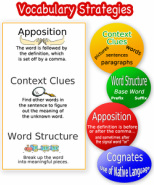What is semantics?

Semantics is the study of the meaning of language. Lexical semantics looks at individual word meaning, defining words by connecting it to actual concept, objects, and other words and by considering personal experiences and understanding of words, role of syntax in word meaning, and the influence of physical and cultural contexts of words. Compositional semantics looks at how individual words and syntax make sentences with meaning. In everyday use, meaning goes beyond just learning the dictionary meaning. A strong understanding of words helps us know where to use words in a sentence, how and where to use in a social setting, what all the possible meanings are for a word, and what other words might be used in their place.
When considering how we understand words, there are many different ways to approach word meaning, two of which include:
[+carnivore]
cat, goldfish In defining words, we can also consider semantic relationships, such as:
Dalmatian
pronunciation), Sink as in kitchen sink/sink as in fall down into something (homographs- same spelling & pronunciation) Semantic change occurs when words change in their meaning through use over time and in different contexts.
At the sentence meaning level, one might look simply at the composition of sentences to understand meaning, though the underlying context of sentence provides lots of meaning as well. Compositionality looks at how sentences mean by looking at the parts of the sentence and how they are put together to make meaning. However, when using sentences for functional and everyday purposes, we find meaning in context, not just in the abstract parts. For example, one phrase can have many different meanings, depending on the context it is used in. “You’re on fire” can mean a literal fire if someone’s clothes catch fire, or can mean that someone is doing really well on successive tasks. Idioms are exemplars for the importance of context for meaning. Idioms are sayings where the meaning of the statement does not come directly from the meaning of the words used, but instead meaning comes from metaphor to an original situation or setting or from use in literature or shared cultural experiences. For example, “Being saved by the bell” is an idiom who roots lie in boxing, where the bell was rung just in time for a fighter to make it, and now the metaphor applies to anyone who is saved just in time. |
in the classroom

Tips for Applying Semantics:
everyday speech, can take only 1-2 years to develop. Academic language can take 7 years or more for ELLs to develop, as it includes more rarely used, complex vocabulary that may have more abstract meaning and requires significantly more background knowledge to understand. Keep this in mind when considering language development and appropriate expectations and activities for ELLs.
|
